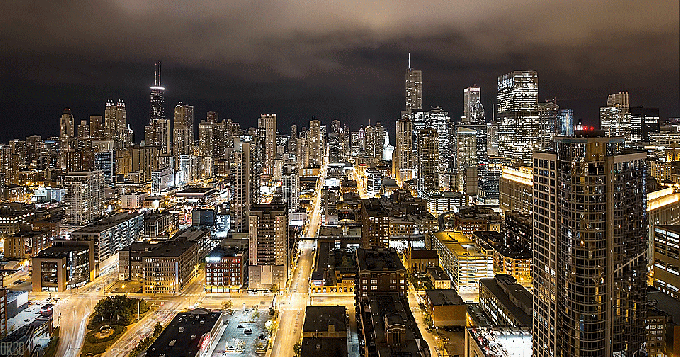
Stepping from your driverless car (which hummed off to find a parking spot), you glance at your wrist and notice that your virtual assistant plotted your path through the crowds of pedestrian traffic to your favorite coffee shop. You slip past the line and give a bright smile to the barista. He leans across the counter with your drink that was ordered and paid for before you even stepped in. Heading for the office, you answer a call, barely noticing that the music that was emanating from a boutique has become softer. You pass a robotic concierge and enter your office. The lights blink on and then adjust to the morning glare. The temperature rises just a few degrees—just how you like it.

Does this average morning sound like science fiction? It shouldn’t, because you may soon be living it. Those who are harnessing the power of technology are now already on the ground floor of one of the most fantastic, technologically-advanced eras ever. With the increasing number of smart cities in the world, and many programs in the pipeline, city dwellers may soon be able to enjoy a frictionless lifestyle that not only allows them to reap the benefits of an advanced infrastructure, but also help promote a safer, cleaner world.
“WHAT DOES THE SMART CITY EXPERIENCE OFFER THE TECH-SAVVY CITIZEN?”
It is expected that over $1.5 trillion will be invested into smart city infrastructure by 2020. Many cities are in the planning or pilot program stages. Investment in smart cities is about more than providing a comfortable existence for its citizens (although Dubai is specifically targeting the “happiness” of city dwellers). The primary drivers of technology use in cities are typical urban scourges: traffic jams, environmental blights, overcrowding, ineffective resource management, and crime. Smart cities are using cameras and sensors to gather data to enhance operations, and then making that data open source—meaning that citizens will eventually be able to tap into the power of a vast database to provide for their own needs. What does the smart city experience offer the tech-savvy citizen?

Dominating the Smart City
Before we can experience the advantages of the smart city, we need a simple way to interact with data, namely via wearables and smart apparel. In the near future, wearables will still likely connect to your phone or tablet to deliver the best experience, but as technology improves, watches, necklaces, bracelets, and apparel will eliminate the need for a handheld device. While everyone loves their phones, bending down to look at them is not only bad for the neck and arm muscles, but also quite dangerous. Wearables provide for the safety of the individual and allow for greater freedom.
Current trends in wearables go beyond internet-enhanced eyewear, like Google glass, although eyewear is a key piece of urban technology because it offers one of the best visual ways to safely interact with the environment. Other wearables will deliver a personalized experience. For example, shoes will adjust to provide greater comfort for long walks, track running goals, and even help you improve your golf game. Devices that painlessly monitor vital signs will allow those who suffer from chronic illnesses, such as diabetes or asthma, to easily address health concerns before a trip to the hospital is needed. While all of these types of devices operate well independently, in a smart city they become much more valuable. In fact, they will become indispensable since wearable devices will allow the user to tap into a deep ocean of data. But what types of advantages can wearable users expect?
You are as Smart as a City
Smart cities’ greatest contribution will be providing data and allowing others to access it. Knowing which streets are blocked by accidents so you can re-route your path can save time, but knowing which city areas have higher levels of particulate matter can save your health.
“WEARABLES WILL MAKE THE DIGITAL NATIVE NOT ONLY SURVIVE IN THE NEW URBAN ENVIRONMENT, BUT DOMINATE IT.”
Some cities are already rolling out technology-enhanced solutions to inhabitants, like Juniper Research’s top five smart cities of 2016. For example, while Singapore is not planning on sharing all of its data, it has opened up 8,000 datasets for use. Like other smart cities, Singapore is partnering with a range of companies to help drive that vision. One possible use of the city’s smart offerings is through its vehicle location monitoring. All vehicles in the nation-city are tracked, so if you can’t remember where you parked or your vehicle is stolen, it can be easily located. With a simple wearable, an elderly or chronically ill person has instantaneous access to Barcelona’s 24-hour telecare service. The city also offers an app that helps you find the most efficient way to tour the city. Amsterdam has piloted an efficient lighting system. The GeoLight app, for example, allows a user to get the brighter light they need while they are near the streetlamps; as the user moves away, the lights dim to save energy. San Francisco is doing its part to reduce waste through its RecylceWhere program, which uses data to show citizens the best recycling options.

While government initiatives are vital to smart cities, innovative businesses cannot be overlooked. There are already a number of AI programs available which can intelligently help you juggle tasks, such as Amy Ingram. Google’s autonomous car will help reduce insurance costs and accidents, all while making your commute to work more relaxing. Siemens, known for its smart buildings, offers energy-efficient lighting as well as pressure sensors that allow for the lighting to adjust and computer to come on in an individual’s workstation. Of course, technology also makes shopping easier, too. Feel like checking out that outfit you saw on the way to work? With Memo Mi’s memory mirror, you can try it on, see yourself from all angles, and then upload the images to your device.
The Future is in Your Hands (Or, on Your Wrist)
Investment in smart cities will only increase as governments tackle the problems of urban life. Wearables will allow city dwellers to take advantage of this investment through their access to data. Every aspect of life will be easier thanks to the growing partnership between companies and local governments. Wearables themselves will evolve, too. There are still many questions about how quickly programs can be implemented, but it is clear that one issue has already been solved. Wearables will make the Digital Native not only survive in the new urban environment, but dominate it.
Refer to the full article on FashNerd. Published on July 15, 2016. Author Scott Amyx.


















